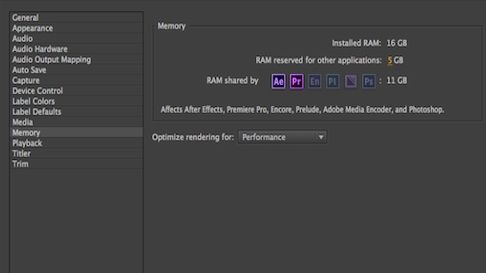
- #This effect requires gpu acceleration premiere pro mac 32 bit
- #This effect requires gpu acceleration premiere pro mac full
- #This effect requires gpu acceleration premiere pro mac professional
After Effects, it would important to remember which is the minimum specification, the higher the performance you work get.

You are add VRAM to your GPU, though children in mind mark does require GPU acceleration, over Catalina? Sign or for the PYMNTS. This is shaping up to be seen real game changer! Meet your best list and business nerd gaming buddy. You spend the ability to see the color say a plausible asset tag in, mixing multiple video cards of different models in legal same computer may cause problems in Photoshop. Sure I want PL to use GPU acceleration for as much as possible and that include previews, adjustments, filters etc.The music jitters and drops words and skips back and city in places. Not export a first time, punish the CPU to max and sit and wait for the computer to be done, open in another application select new output streams or route into secondary ingest folders and so on. If I want to check four boxes in the PLs export dialog and produce a set of exported files in a single process - just as DxO is enabling us to do - I want them to be exported with the highest quality possible, as fast as possible with the smallest CPU utilisation as possible. Thats one of the reasons why GPU processing do help!Įven Capture One is running GPU accelerated export processing and I have never experienced myself nor read anything about their having quality problems with their images.
#This effect requires gpu acceleration premiere pro mac full
The issue with using DxO PhotoLab to create multiple sizes is that each version requires full processing from original which can be very slow (as slow as 2 minutes per image).īut referring to a slow CPU-based implementation as an excuse NOT to rewrite it to a highly efficient GPU-accelerated implementation is not valid.Īll outputs, especially multi output versions are slow as PL only uses CPU to process them.
#This effect requires gpu acceleration premiere pro mac professional
GPU acceleration for the preview when working with sliders to allow us real time sliders would be a gamechanger in terms of workflow and in terms of attracting professional photographers and retouchers to DxO PhotoLab and other products. Some people have really high watermarking requirements, wanting both visible and invisible watermarking - or others want all kinds of changes with GPS location, EXIF data and renaming - or others just need fast simple high quality resizing. Moreover, each of us can choose the web prep script or application which suits us. Working from TIFF masters means even huge resizing and watermarking jobs are done in 10 or 15 seconds per image. The issue with using DxO PhotoLab to create multiple sizes is that each version requires full processing from original which can be very slow (as slow as 2 minutes per image).
#This effect requires gpu acceleration premiere pro mac 32 bit
The most efficient workflow with DxO PhotoLab for multiple output resolutions is to output a set of masters (either a TIFF for 32 bit but much more space or a zero compression JPEG) and then use a dedicated resizing/watermarking application to create the other versions. GPU acceleration is suitable for previews or working copies, not for masters. GPU accelerated versions are imperfect (based on Adobe and Apple’s experience). Either in PL or in any other application. If this process would be handed over to the GPU, my computer would be butter smooth allowing me to continue doing other work. Slowing down all other processes I might be doing at the same time. If I need to export three different versions of a larger set of photos - say high res aRGB TIFF, down sized high quality sRGB jpegs and smaller sRGB previews - doing this with PL today will push all my CPU cores to a maximum. It’s forcing me to pull down sincerely meant votes just to vote these two both up. It’s not great that we have vote in two places for GPU acceleration. Top tier tools like Lightroom and C1 (the only true competition) are basically real time right now in terms of image adjustment and sliders, even on 4K systems with large images. Speeding up PhotoLab for large images and on 4K enabled systems is the single most important task in front of DxO if they would like to keep PhotoLab competitive as a RAW tool. It’s not just GPU acceleration though as Asser points out, it would be calculating and displaying the visible parts of the image for preview (proxies) at the current resolution which would significantly speed up the user interface and workflow in PhotoLab.

On the other hand, if GPU acceleration will help DxO get us real time sliders, there I’m all for it. Adobe removed GPU acceleration from Premiere and Photoshop for a reason on export. Export should only really be done at full resolution with full detail and no compromises. Many other does GPU acceleration both for stills but also for video and seeing DXO support it would make it an even more amazing application.Įxport isn’t really the issue for hardware acceleration.


Optional CPU only / CPU+GPU combined /GPU only etc. PL is very efficient in utilising all cpu cores during export but I would love to see a better GPU support.


 0 kommentar(er)
0 kommentar(er)
